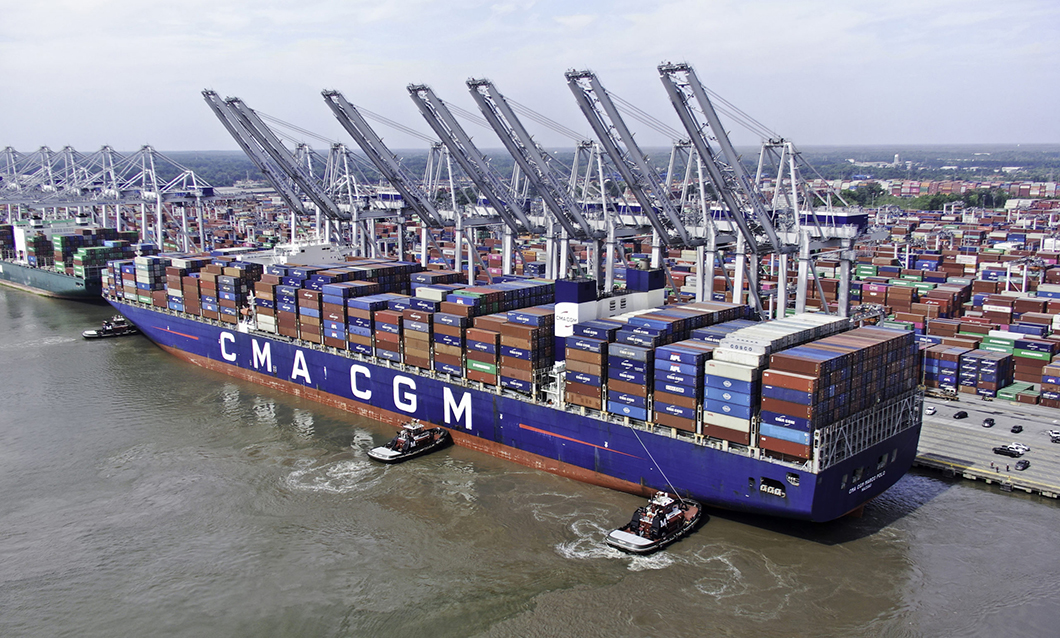
Fiscal Year 2022 was another record-breaker for the Georgia Ports Authority, with container volumes growing 8 percent for a total of 5.76 million twenty-foot equivalent container units.
The Port of Savannah ended the year with a record June, handling 494,107 TEUs in total cargo, up 10.6 percent or 47,300 TEUs compared to the same month last year.
“As the hub in a global network of road, rail and ocean carrier connections, our ports link Georgia businesses to international trade lanes and open doors to prosperity for our state and nation,” said Georgia Gov. Brian Kemp. “The Georgia Ports Authority and its partners in the logistics industry are powerful drivers for local economies across the Peach State, from small communities to our thriving urban centers.”
In addition to organic growth among its port customers, Savannah trade has also been boosted by West Coast labor talks and delayed access to rail at West Coast ports, prompting a significant shift in vessel calls. Savannah is also receiving container trade diverted from the Port of Charleston. GPA is currently handling the highest volume of ad hoc and new service vessels the Port of Savannah has experienced to date. Uncertainty around the labor talks, unprecedented and unplanned vessel calls, record cargo volume, and vessel diversions to Savannah have contributed to a higher than normal number of vessels waiting at anchor.
“Despite the record volumes, the Port of Savannah remains fluid,” said GPA Executive Director Griff Lynch. “Several factors have contributed to our growing container capacity, including expedited infrastructure projects, our inland pop-up yards and an influx of truck drivers moving to the Southeast.”
GPA is experiencing record truck turns during both its day and night-gate operations. Garden City Terminal saw a weekday average of 14,500 truck moves in June, counting both inbound and outbound gate exchanges.
To better accommodate rising demand, the GPA recruited 166 new workers in FY2022, for a total of 1,647 direct employees.
“I would like to thank our employees, as well as our partners at Gateway Terminals and the International Longshoremen’s Association for their outstanding work to keep commerce flowing across our docks,” Lynch said. “Through communication, collaboration and teamwork, we continue to provide unmatched service to our mutual customers.”
Looking forward, the GPA Board approved the purchase of 12 new rubber-tired gantry cranes and other container handling equipment at its regular July meeting. The RTG purchase totals $30.25 million. The Port of Savannah already features 198 RTGs, and another 24 were already on order. Tuesday’s action will bring the fleet to 234 in Savannah.
“Growing our workforce and infrastructure is part of the Board’s continuing commitment to keep our deepwater terminals ready to take on new trade,” said GPA Board Chairman Joel Wooten. “Presently, we are expanding our dock space to handle additional big ships and increasing our container storage space in Savannah, while simultaneously enhancing our capabilities to move autos and breakbulk in Brunswick.”
In FY2022, export loads accounted for 1.32 million TEUs for GPA, while import loads totaled 2.86 million. Top exports included forest products, kaolin clay and automotive cargo. Top import commodities included furniture, machinery and plastic goods.
In addition to increased container trade, breakbulk tonnage also saw strong growth in FY2022, up 15.7 percent to more than 3 million tons. Mayor’s Point Terminal in Brunswick turned in a particularly strong performance, with breakbulk forest products leaping from 52,244 tons in FY2021 to 252,000 tons in the fiscal year ended June 30.
“Much of the increase in breakbulk cargo crossing GPA docks is related to the relatively lower cost of breakbulk movement compared to container rates in today’s market,” Lynch said.
Georgia’s deepwater ports and inland barge terminals support more than 496,700 jobs throughout the state annually and contribute $29 billion in income, $122 billion in revenue and $3.4 billion in state and local taxes to Georgia’s economy.


Crime & Safety
GBI Arrests Twin City Man in Child Molestation Investigation

Bulloch Public Safety
7/21/2025 Booking Report for Bulloch County

Bulloch Public Safety
7/14/2025 Booking Report for Bulloch County

Bulloch Public Safety
7/28/2025 Booking Report for Bulloch County

Bulloch Public Safety
7/18/2025 Booking Report for Bulloch County

Bulloch Public Safety
7/25/2025 Booking Report for Bulloch County









